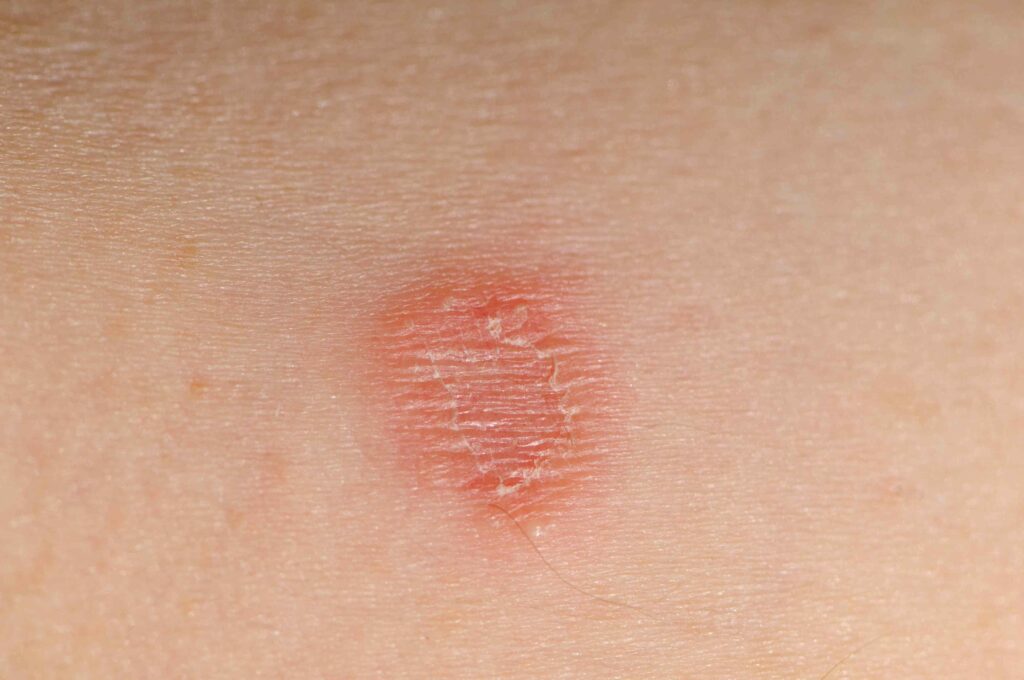Rash
What is a rash? A rash is an area of irritated or inflamed skin usually characterized by skin lesions such as reddish, scaly, or itchy patches of skin. This may progress to look like blisters or welts. Read More
Top Doctors For Rash Treatments
Top Hospitals For Rash Treatments
Rash
What is a Rash?
A rash is an area of irritated or inflamed skin usually characterized by skin lesions such as reddish, scaly, or itchy patches of skin. This may progress to look like blisters or welts. The texture or color of the skin noticeably changes.
Rashes may be common, but what do you do when you have rashes, and how do you differentiate them? Let us walk you through it.
Types of Rashes
There are different types of rashes, and some of them are named below.
- Eczema, also known as Atopic Dermatitis, is characterized by an itchy inflammation on the skin. The affected skin area is red, dry, itchy, and bumpy. Eczema is caused by a combination of environmental triggers and stress, genetics, and immune system activation.

2. Psoriasis results in the rapid multiplication of skin cells. It is a chronic autoimmune disorder usually triggered by infections, weather, skin injury, stress. It appears as reddish, dry, scaly, and itchy skin patches, commonly occurring on the elbows, trunk, knees, and scalp.
- Contact dermatitis is an allergic or irritant reaction to the body’s direct contact with a particular substance. It is usually characterized by itchy or dry, scaly skin, redness, blisters. It usually resolves when the substance causing the reaction is identified and removed.
- Hives, also known as urticaria, are a common skin rash characterized by the sudden outbreak of itchy welts or pale red bumps on the skin. It is usually triggered by an allergic reaction to a medicine, food, pollen, animal dander, insect bites, etc.
- Impetigo, mainly occurring in infants and children, is a highly contagious skin infection. It is characterized by red sores around the mouth and nose. These sores weep and ooze for some time and eventually form a yellow-brown crust.
- Scabies is a contagious and itchy skin condition that spreads through physical contact. It is also called sarcoptic mange caused by a tiny burrowing mite, Sarcoptes scabiei var hominis.
- Shingles occur in people who already have had chickenpox. It occurs as a reactivation of the virus and is characterized by a painful rash. People with shingles can pass the virus to susceptible individuals who have not had chickenpox before.

- Seborrheic dermatitis also called seborrheic eczema, commonly appears as scaly patches and itchy red areas on the skin. It also appears on other parts, e.g., face, back, upper chest, mainly oily body areas. Hormonal changes, stress, harsh detergents, and chemicals trigger this skin condition.
- Pityriasis rosea is believed to be caused by a viral or bacterial infection, though not fully understood. It starts as a wide spot (herald patch) on the chest, back, or abdomen and is followed by smaller spots that appear from the middle of the body or torso.
- Ringworm gets its name from the ring-shaped rash that appears on the skin accompanied by itchy, red scaly, cracked skin, and hair loss. It is a fungal infection caused by Tinea corporis, a fungus found on the dead skin surface, hair, and nails.

- Diaper rash occurs as a red rash on the buttocks. It is mostly seen in babies due to diarrhea, new food or antibiotics, and wet or soil diapers staying on for too long.
- Lichen planus occurs as purplish, itchy swellings, or bumps on the skin. It also affects mucous membranes, nails, scalp, and genitals. In addition, it presents as painful, lacy patches of white dots in the mouth. Lichen planus is an uncommon autoimmune condition, and it is not fully understood what triggers the body’s immune reaction though some named culprits are genetics, allergens, viral infections, etc.
- Fifth Disease (Erythema infectiosum) caused by Parvovirus B-19 is more common in children than adults. Also nicknamed “slapped cheek disease” because of the bright red rash on the cheeks, Fifth disease also appears on the legs and arms. The Parvovirus B-19 is easily spread through saliva and respiratory secretions. Before the rash appears, there are mild flu symptoms, which is when one is most contagious.

- Nummular eczema may occur after an injury and appears as coin-shaped rashes or sores on the skin, which may spread, ooze, itch, and form crusts. Temperature changes, stress, dry skin, environmental irritants, etc., tend to trigger the development of nummular eczema.
- Rosacea presents as small, red, pus-filled bumps on the face and is often mistaken for acne. Though not contagious, the exact cause of rosacea is not known. It is more common in women.
- Athlete’s foot is a fungal infection that appears as irritated, scaly areas of the feet. It starts between the toes and progresses to other parts of the feet. It is contagious and is spread through contaminated floors, clothing or towel. Athlete’s foot is common among people that use tight-fitting shoes/footwear for long periods, and their feet become sweaty.
- Heat rash is also known as miliaria and occurs mostly during hot weather due to increased temperature. Sufficient sweat to cool the skin is not produced because the sweat glands are blocked or clogged. It occurs in both adults and children.
- Poison ivy rash is an allergic reaction to urushiol, an oily resin present in the leaves, stems, and roots of poison ivy. The poison ivy rash appears as red, itchy swellings or blisters. Poison ivy rash can occur from touching the plant or contaminated objects or inhaling smoke from the burning plants.
Treatment of Rash
The course of treatment could vary depending on the cause of the rash.
In most rashes caused by contact with an allergen, removing such an allergen can reduce or stop the rash.
When to see a doctor?
One might need to see a doctor if:
- The rash is painful and persistent
- blisters develop
- the fluid from the blisters spread the rash
- there is a fever
- the rash is all over the body
- there is joint pain or throat pain
- there is a recent bug bite or animal bite
- swelling of the face
- vomiting or diarrhea
The doctor will inquire if there is a medical history of rashes and ask what diet or medication one is on.
In the meantime,
- Take over-the-counter analgesics for the pain, based on the doctor’s prescription
- Identify and avoid contact with known rash triggers.
- Call the healthcare provider if the rashes persist.
- Follow the instructions and treatment of the healthcare provider
- Practice good hygiene to prevent the worsening of the rash.






















































